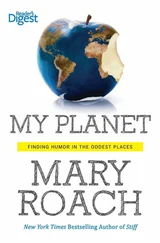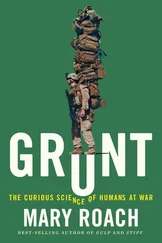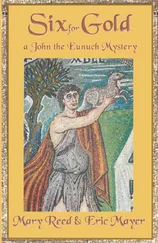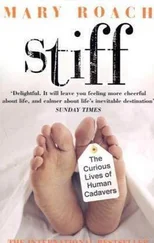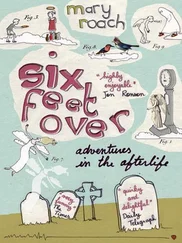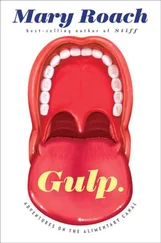Chimp humor was less nettlesome for John Glenn than it had been for Alan Shepard, because Enos wasn’t the media sensation Ham had been. At the time Ham flew, a pair of Soviet dogs, Belka and Strelka, had already returned alive from orbiting Earth, and the press was impatient for a U.S. milestone in space. When Ham splashed down alive, they presented him less as a research animal than as a sort of short, hairy astronaut. The chimp appeared on the cover of Life magazine in his mesh flight suit [44] Ham and Enos traveled in pressurized compartments and thus didn’t need pressurized spacesuits and helmets. Nonetheless, some prototype chimp suits had been developed, including the “SPCA Suit”—certified humane by the Society for the Prevention of Cruelty to Animals. “To prove that a suit was safe for a man, we were going to test it on a chimp, but to prove the suit was safe for a chimp, we had to test it on a man,” U.S. Spacesuits coauthor Joe McMann said in an email. “That was a mind boggler.”
beside the headline, “A Confident ‘Ham.’ Back from Space.” The public sopped it up. Letters and flowers and gifts addressed to Ham began arriving at the chimpanzee colony at Holloman Air Force Base, where Ham returned after his flight. People sent their copies of Life with requests for Ham’s “autograph.” Holloman staff gamely complied, the little hand pressed on inkpads over and over, so many times that a copy of Life “autographed” by Ham fetches just $4 on eBay. (And is possibly a fake: Fearing they’d “wear him out,” the staff, Britz told me, “just put any chimp’s hand on it after a while.”)
Newspaper databases typically have about five times as many Ham stories as Enos stories. “Enos didn’t have the charisma, and he wasn’t first,” says Fineg. Thus, John Glenn’s glory was little diluted by his simian predecessor. Also, Glenn managed to deflect the unkind comparisons by making the jokes himself. He told a congressional audience about the humbling experience of having been asked by President Kennedy’s young daughter Caroline, while her father stood by, “Where’s the monkey?” [45] A lasting fixation for young Caroline. Three months earlier, around the time of Enos’s flight, Jackie Kennedy rented a monkey for her daughter’s first birthday party in the White House, an event widely covered by the wire services at the time. In addition to a live monkey, the party featured “jelly sandwiches,” whistles, tricycles going “up and down the ground floor of the White House,” and, hopefully, sedatives for Jackie. Caroline no doubt wanted her very own space chimp. It was a reasonable expectation, given that Nikita Khrushchev had presented her mom with one of the puppies of space dog Strelka. The puppy was a gift, but also a nose-thumb: Strelka had beaten Enos into orbit by over a year. According to Animals in Space , White House staff had the pup searched and X-rayed “to check for bugs or a possible doomsday device.”
Enos was as unpopular as Ham was beloved. In news accounts, you could tell Fineg had applied himself to the task of finding positive ways to describe Enos. Rather than “obstinate” and “ornery,” terms he currently uses, Fineg referred to Enos as a “quiet, taciturn, pillar of the community type.”
“He was a mean one,” Fineg recalled when we spoke. Staff nicknamed him Enos the Penis. “Because he was just a son of a gun.”
“Meaning he was a dick.”
“Yeah.”
The nickname Enos the Penis is mentioned in the book Animals in Space , but the authors have an altogether different account of its genesis. They write that “Enos the Penis” derived from the chimp’s fondness for masturbating, and that NASA had inserted a balloon catheter in his penis during his orbit in part to discourage the habit. (Both Ham and Enos were to be filmed during their flights.) When the lever system malfunctioned, delivering shocks rather than banana pellets for correct responses, a frustrated Enos had yanked out the catheter and “began fondling himself in front of the camera.” Or so the story went.
I spent a few breathless days searching government archives for the X-rated Enos footage. I found footage of Ham in flight and Enos being readied for flight, but none of Enos inside the capsule pulling levers—his own or NASA’s. I contacted Fineg again.
“I don’t know where that came from,” he said. “I worked with Enos for a number of years, and never saw him do anything like that. His name was the result of his demeanor.”
“So the catheter didn’t have anything to do with keeping him from touching himself?” I don’t usually go in for euphemisms, but Fineg is a man who says “behind,” as in “I have a picture where he bit me in the behind.” The catheter, it turns out, was in the chimp’s femoral artery (to monitor blood pressure), not his urethra.
Still mildly unconvinced, I called Fineg’s colleague Bill Britz, who had been Ham’s vet but also worked with Enos.
“Naw,” said Britz. “I mean, most male chimps play with themselves. But he couldn’t even get to it.” Britz explained that the couch inside the capsule was designed with a barrier to keep the chimp from reaching down below the waist and pulling out the arterial catheter during the flight. Britz agreed with Fineg: Enos had no such reputation.
I contacted Chris Dubbs, one of the authors of Animals in Space, to find out where the story had come from. He forwarded an article his coauthor had found on the Web site of a Dr. Mohammad Al-Ubaydii. The Al-Ubaydii rendition included an arresting new detail: “During the ensuing press conference, Enos began by pulling his nappy down. NASA’s people were horrified of what might follow. Fortunately Enos had more class than this, and restrained himself.”
Dr. Al-Ubaydii, replying to an email, said he’d come upon the story in the 2007 book Space Race. In this version, Enos is less restrained: “As he pulled down his trousers, cameras clicked, flashing like diamonds, ensuring that Enos[’s] name would live in memory as much for his hobby as for his aeronautical achievements.” Inquiries to the author produced no reply, but a Google Books search unearthed another reference, this one in Dark Side of the Moon, published in 2006. “The next day at his post-flight press conference, he horrified his NASA handlers when he ripped off his diaper and started to fondle himself.” Dark Side cites yet another book on the Apollo race: James Schefter’s 1999 The Race .
“[Enos] would pull down his diaper in the middle of a training exercise and begin to masturbate. His handlers and medics figured that he’d stop if they inserted a catheter to drain off urine instead of using a condomlike device attached to a tube. It didn’t work…. They devised an advanced catheter with a small inflatable balloon to prevent its easy removal.” In those few lines, Schefter establishes himself as, in the words of one reviewer, a writer who “does not let facts get in the way of a good story.” The condom–tube device sounds like the urine collection device designed for Mercury astronauts to use during spaceflight. It was never used on chimps. And it is hard to imagine anyone going through the significant risk and hassle of catheterizing a chimpanzee just to keep him from playing with himself during training sessions. As for the balloon catheter, it was patented in 1963—two years after Enos’s flight—as a tool to remove blood clots, not to discourage chimpanzee masturbation. The Race has no sources or bibliography, and Schefter died in 2001.
What’s interesting is that Schefter never says Enos was masturbating during his spaceflight. He merely states that he pulled his catheter out. Nor did he claim that Enos fondled himself at the postflight press conference (which took place uneventfully at Kindley Air Force Base in Bermuda, not far from where Enos’s capsule was recovered). Schefter’s scene takes place back at Kennedy Space Center, not at a press conference but in front of a few reporters and NASA officials, as Enos descends the steps of the plane that brought him back from Bermuda. And he merely pulls his diaper down.
Читать дальше

